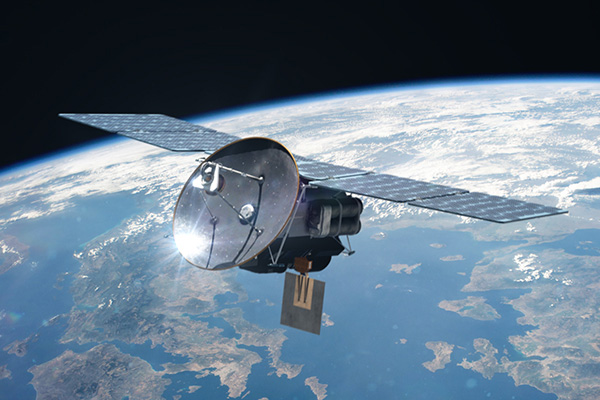Why commercial space companies need scientists
This week I attended the Lunar Exploration Assessment Group (LEAG) meeting in Columbia, MD. The recent reinvigoration of lunar exploration was reflected in the number of registrants (289!) and packed meeting room. I had been to assessment group meetings before, but this was my first lunar one.
The morning of the second day was dedicated to commercial space. Five companies—Moon Express, SpaceX, iSpace, Astrobotic, and Masten—were represented on a panel. They provided overviews of their efforts in lunar exploration and fielded questions from the lunar science community.
The companies presented their concepts with varying degrees of detail and credibility. One common thread (in addition to each being represented by a white dude) was that none mentioned anything about career opportunities for planetary scientists. The implicit message was that lunar scientists aren’t necessary for them to pull off their missions.
This is a mistake, and I explained why in a Twitter thread:
I was informed later that iSpace has a planetary scientist on staff, which is awesome! But my comments clearly struck a chord with the planetary science community.
Expanding upon the full thread, I want to explain what exactly I did at Planetary Resources, Inc. (PRI) to show the value that planetary scientists can bring to commercial space companies.
1. Defined mission requirements and data products for an asteroid prospecting mission.
I joined PRI as a geospatial analyst but was promoted to Director of Data Products when we refocused our efforts on asteroid prospecting. My team and I were delivered high-level business objectives that our asteroid prospect spacecraft would have to address. These were analogous to high-level NASA objectives from National Academy of Science surveys, NASA Roadmaps, or Program Objectives.
It was the responsibility of my team to determine which scientific measurements were necessary to achieve those objectives. To track them, I created a science traceability matrix, though I rebranded it as a “product traceability matrix” because our objectives were driven by business, not science (although the overlap ended up being extensive because so little was/is known about carbonaceous asteroids).
2. Pushed back on engineers’ work when it negatively impacted mission objectives
I worked with the engineers (all flavors: mechanical, electrical, software, systems, etc.) to explain the motivations of my team’s measurement requirements so that they clearly understood the purpose of their designs. If their design wasn’t going to result in the final data product I had in mind, I made sure they knew. You can’t design something well if you don’t understand how it’s going to be used.
3. Created an external advisory board of asteroid scientists
I am not an asteroid scientist by training, but like all planetary scientists, I have the foundation required to pick up other areas with relative ease. That being said, the Asteroids IV textbook’s 1000+ pages and extensive coauthor list shows it’s not possible to even one asteroid scientist to know everything about asteroids.
To make sure we were on the right track with our assumptions about asteroids, I formed an advisory board of 8 asteroid scientists with a good cross-section of expertise. I was then was their primary point of contact to PRI, keeping them updated on what we were up to.
4. Planned and ran on-site reviews involving the science advisory board
We emailed the advisors as needed with questions, but the most effective use of them was bringing them to Seattle for an in-person update and review of our mission concept. I planned and ran each of the 2-day reviews. Tellingly, all of them came back after the first review!
5. Wrote and checked science copy for marketing materials and the website
Our marketing person often came to me to double check copy she had written to be published or printed. Sometimes I just wrote it from scratch. It was important to me that we presented ourselves as being knowledgeable about the focus of our company.
6. Provided assumptions regarding the target asteroids for engineers' designs
The systems engineering process requires a full understanding of requirements and constraints. Asteroid surface compressive strength is a good example of one that came up in the mission development process. Our spacecraft was going to interact with the asteroid, so the engineers had to know how squishy the surface was. We’re only now starting to better understand the physical properties of carbonaceous asteroids with Hayabusa2 and OSIRIS-REx, but my team worked with the engineers to provide bounds on their assumptions.
7. Performed literature reviews and wrote summaries of the salient points for the non-experts (i.e. everyone else)
To provide scientific context for my coworkers, I started an “Asteroids 101” page on our internal wiki. I also fielded their questions on a daily basis, which often required a literature dive.
8. Explained the science to preexisting and potential investors
A company is only as good as the people involved. On more than one occasion, I was responsible for presenting the scientific understanding of asteroids to people with more money than I’ll ever have. This is largely due to the optics of pitching: it’s important to show that you have a team capable of executing on the company’s vision. Having a planetary scientist on staff (my doctoral status in particular) was presented as a sign of credibility.
9. Attended conferences to stay abreast of the latest science
Given the reliance on scientific expertise in informing our mission, it was critical to know what the latest science was so that we could factor that into the spacecraft and mission design as soon as possible. I was also the primary point of contact to that community, setting the tone for how we were perceived by scientists.
10. Formed partnerships with scientists whose work supported ours
There were scientists doing research that was in line with PRI’s objectives, and I pursued and developed a number of those relationships.
The video below, though stylized and prettified, is a quite accurate depiction of the asteroid prospecting mission concept we developed at PRI. The architecture, the spacecraft, the penetrator, and the concept of operations were all born out of the measurement requirements my team and I wrote.
It was an iterative, months-long process of back-and-forth between us and the engineers to find the best technical solution—the way it should be.
Who else could lead that but a planetary scientist?
I have no doubt that my former PRI coworkers would say that I was indispensable at PRI. This isn’t arrogance speaking: 11 of them formed a new company, First Mode, and invited me to join the team this past summer. To them, my background was an asset rather than a hindrance, and they knew the value I would bring to their new endeavor.
At First Mode, I use my scientific background and the engineering I learned at PRI to create opportunities for us to support earth and planetary scientists’ engineering needs in exploring our solar system. I also lead technical contracts, including in the mining sector, where engineers understand the value of their geologists.
I hope my experience can serve as a blueprint for planetary scientist roles at all the NewSpace companies pursuing commercial space exploration. They simply don’t know how much they need us.


